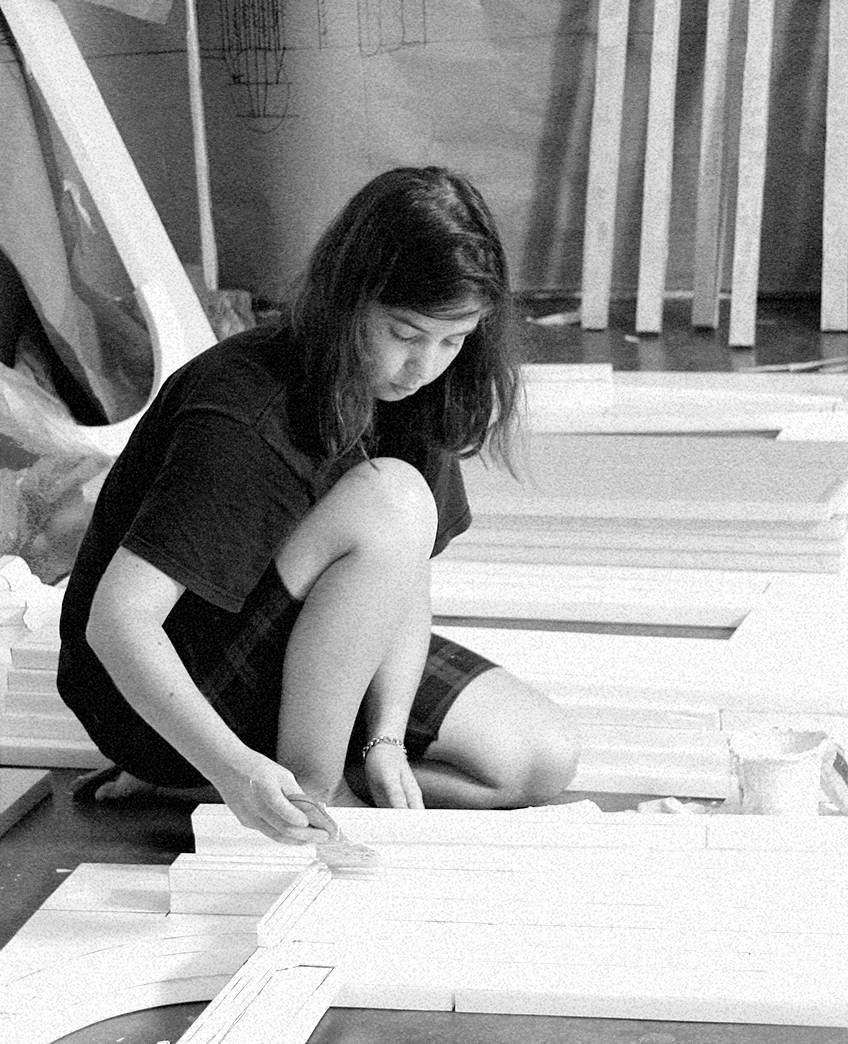Chapter Six
The Portal
The history of the youngest artist of Gabinete proves that the context marks the beginning and characteristics of the artistic practice in somebody. For Pilar Quinteros, having been born in Puerto Montt made her take her imagination far. She inherited the fascination for the mix of manufacturing, history and patrimony from her mother, an architect, and the persistence to develop projects, many times hard to carry out, from her father, a marathon runner.
Moving to Santiago made her perceive in a different way her surrounding, the cities and their inhabitants and so, the configuration of the history starting from facts many times expressed in what is built and risen by men, became her driving force to create her pieces.
The configuration of the history starting from facts many times expressed in what is built and risen by men, became her driving force to create her pieces
Pilar has built a portal that makes the past and the contemporary converge, reviving hidden or unknown stories through works created mostly by her and that inhabit spaces in cities for short and determined periods. The fragility and precariousness of the materials she uses reflect how ephemeral the present is and how time and people can make fractions of mankind mutate or disappear.
Constructions starting from aesthetics reflections of history make the spectator think or even doubt about their reality, which can easily be a construction of others and where fiction can be told and installed as the most real of all histories.
En el 2014, near the neighbourhood where Pilar Quinteros lives, excavations made to build the subway, stumbled upon a cemetery of the Llolleo culture and corpses and pots in it. The artist registered the event and the process and her curiosity about unknown cultures made her reflect on the future of people, as individuals and as a society. For “Cementerio Indio” (Indian Cemetery) she built an information booth in the place of the finding to inform passers-by on what was taking place there, a task she complemented with reproductions she made of the utensils probably found, to tell what was going on behind the panels, in a city where people are rarely interested on what is going on, even if it’s next to them.
That year, Pilar travelled to Kiev, Ukraine, to work on a work to be done in a public space. “Fuente de la Amistad de los Pueblos” (Friendship of peoples fountain) was the last fountain of the main square that was replaced by a shopping mall and that gives name to this work, which remakes the fountain in paper and cardboard and puts it in the same spot where the original fountain was; an action that was made thanks to the city’s inhabitants, who got involved with the artist in it.
Para la 32ª Bienal de São Paulo en el 2016, Quinteros desarrolla un proyecto inspirado por la historia del historiador inglés Percy Harrison Fawcett, quien estaba convencido de la existencia de una ciudad perdida en el Mato Grosso. La artista intenta seguir sus pasos para poder encontrarse con este lugar. “Señales de Humo” acoge esa voluntad por entender y mostrar historias que no están inscritas en los registros oficiales y que propician la propia interpretación y recreación de acontecimientos reales o imaginarios.
But the story of something that has not necessarily happened yet can also be reconstructed and imagined and there’s also intuition and deduction to project and imagine situations that will happen within a certain context. “Refugio Antisistema” (Anti-system Refuge), 2017, is exactly that, a construction of a refuge in view of the fact that a possible disaster or catastrophe is, to our country, a matter of imminent nature. Pilar Quinteros’ refuge tries to guess how a real construction with these characteristics would be and what could happen inside.
Pilar has built a portal that makes the past and the contemporary converge, reviving hidden or unknown stories
Imágenes cortesía de la artista








